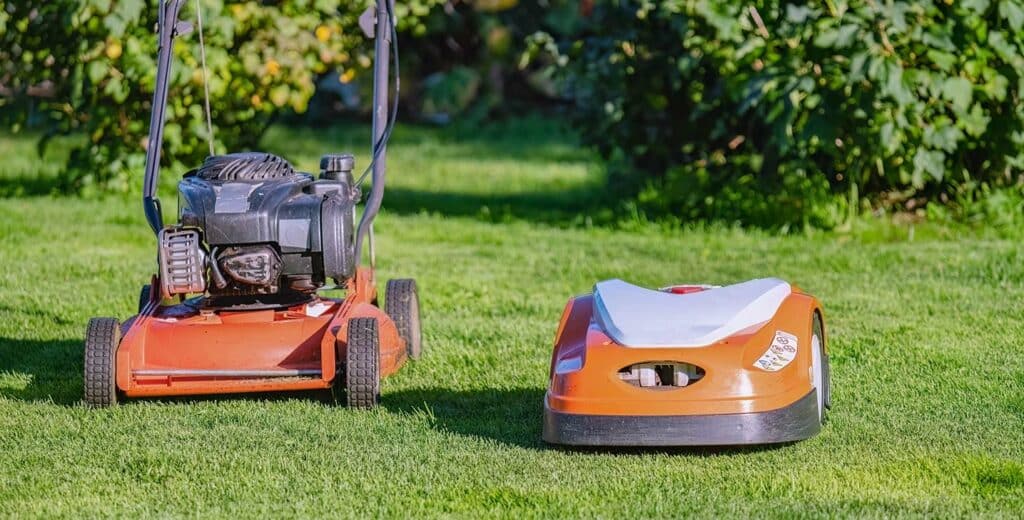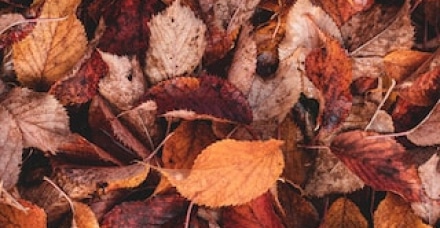Maintaining a beautiful lawn requires regular mowing and ultimately, this is the most basic and foundational of all lawn care cultural practices. Simply put, if done right, it helps keep your lawn healthy and beautiful.
In this article, we will guide you on both the tools and techniques of lawn mowing and answer some of the most frequently asked questions.
Which lawn mower is best?
There are several types of lawn mowers available on the market, including electric mowers, petrol-powered, and riding (sit-on) mowers. More recently, we’ve also seen the rise of robot mowers.
For pedestrian-operated mowers, at LawnsOne we typically recommend either petrol or battery-operated. We don’t like the thought of trailing leads and sharp blades! Petrol and battery mowers, in our opinion, simply outperform electric mowers.
When purchasing, you should consider size (for storage), manoeuvrability, and size of lawn; weight for turning and getting in and out of sheds, and ease of start and reliability. And remember, if you want stripes, you’ll need a roller on the back!

Where to store your mower?
Store your mower somewhere dry and very close to your lawn. Don’t pack it away at the back of the shed, have it close to the door. The easier it is to get out and put it away the more likely you are to use it!
Maintaining your mower
To take good care of your mower, make sure to follow these tips:
- Check the oil and air filter before starting the mower.
- Keep the mower blades sharp and clean.
- Don’t mow during the hottest part of the day.
- Avoid mowing wet grass if possible but better to cut than allow the lawn to get too long.
- Take breaks when mowing for extended periods.
How often should I mow my lawn?
If the grass is growing, keep on mowing. The more often you cut the better. A good guide is once a week minimum to once every 4-5 days for a normal garden lawn.
Simply, if it’s growing quickly mow it often and if it’s growing slowly mow it less frequently. What this typically means for UK lawns by season is;

Winter
In Winter, mow your lawn only if necessary, and avoid cutting the grass too short as it can damage the grass roots. Remember to disperse worm casts first.

Spring
During Spring, mow your lawn around once a week and adjust the mower height to a higher setting to prevent damaging the grass.

Summer
In Summer, mow your lawn every five to seven days and adjust the mower height to a lower setting. However, don’t cut the grass too short as it can lead to sun damage and weed growth.

Autumn
During Autumn, mow your lawn every week and gradually raise the mower height as the grass growth slows down.
What height should I mow my lawn?
For the average lawn, between 30-40mm is ideal. Longer in summer if it is dry and the lawn is not irrigated, and it can be left a little longer in winter too. Don’t make the mistake of mowing shorter in summer and never leave more than seven days during growing periods, spring and autumn.
How much should I cut off?
Only ever cut around a third of the leaf at any one mow. If you need to get the lawn height down do it by leaving 3-4 days between cuts. Never let the grass grow long and cut it off at its ankles. It will not thank you for it. You are taking away its ability to photosynthesise!
Should I collect the mowed grass?
If you are mowing really regularly and the amount you are taking off the grass is 10mm or less, you can consider letting the clippings go straight back onto the lawn. These clippings will break down and complete the nitrogen cycle. If the clippings are longer than 10mm, box them off and compost them.
Should I mow a wet lawn?
If you mow regularly and don’t take too much off in one cut, it is possible to cut when wet. It will be messier and take longer, but better to mow wet than leave it for weeks on end.
Should I change direction when mowing?
It is important to change the starting position when you mow and to change the direction of mowing regularly. This does two things. It prevents tram lines (especially for those with wheel only mowers) which is when lines begin to appear along the lawn from continuously using the same lines. It will also help to keep creeping grasses from growing over like a “comb over” hair style. Changing direction lifts these, ensuring the grass grows from the base.
What is double cutting?
Double cutting is mowing the lawn in two different directions on the same cut. It’s what gives you a chequerboard effect (if you have a roller mower), but more importantly, it gives a really even cut. There are no Mohicans (those lines of missed grass between lines).
- regular mowing at the right height is essential for a green, thick sward
- choose the right lawn mower based on lawn size and topography
- adjust mowing frequency and height depending on season and growth